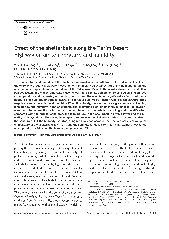摘要
The temperature and humidity of the shelterbelt micro-climate on both horizontal and vertical scales in the extremely drought area were measured with multiple HOBO temperature and humidity automatic observation equipments in the hinterland of the Taklimakan Desert. The results show that the shelterbelt ecosystem of the desert highway plays typical micro-climate adjustment rolesin stabilizing surface air temperature and increasing air humidity, and so on. Solar radiation significantly affects both temperature and humidity of surface layers, and it has a positive correlation with the temperature but a negative correlation with the air humidity. When it is cloudy, the weather has a great impact on keeping temperature and humidity in the shelterbelt. The shelterbelt also significantly influences the environment, and the micro-climate in the belt has an obvious characteristic of cooling and humidification: compared with the original sand area, the temperature in the shelterbelt is always lower and the humidity is always higher. Moreover, the temperature range at the shelterbelt edge is greater than that in the sand area, but the humidity is always higher. Our conclusion is that the vertical-effect range of temperature of the shelterbelts is 4-10 m, and the humidity range is 6 to 8 m; the horizontal-effect range of temperature is 16 m and the humidity range is about 24 m.
-
单位中国科学院; 中国科学院新疆生态与地理研究所
